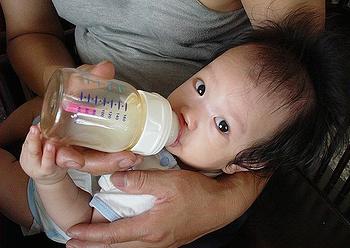
DURHAM, North Carolina, February 25, 2013 (ENS) – Environmental exposure to bisphenol A, a chemical found in plastics and resins, may suppress a gene vital to nerve cell function and to the development of the central nervous system, finds new research led by scientists at Duke Medicine.
Published today in the journal “Proceedings of the National Academy of Sciences,” the study investigated the effects of BPA on the cortical neurons of mice, rats and humans.
Cortical neurons are the cells of the brain’s largest region, the cerebral cortex. Most of the complex activity of the brain enabling thought, perception, and voluntary movement is made possible by the activity of these neurons.
“Our study found that BPA may impair the development of the central nervous system, and raises the question as to whether exposure could predispose animals and humans to neurodevelopmental disorders,” said lead author Wolfgang Liedtke, M.D., PhD, associate professor of medicine, neurology and neurobiology at Duke.
Research in animals has raised concerns that exposure to BPA may cause health problems such as behavioral issues, endocrine and reproductive disorders, obesity, cancer and immune system disorders. But this is one of the first studies indicating that brain and central nervous system development could be impaired by BPA exposure.

BPA is a molecule that mimics the hormone estrogen and interferes with the body’s endocrine system. It is found in a wide variety of manufactured products, including CDs, paper money, dental fillings and flame retardants, thermal printer paper, some plastic water bottles and the lining of metal cans used to contain food.
BPA is used in the manufacture of polycarbonate plastics, which in turn are used to manufacture plastic materials, such as baby bottles and can liners.
BPA can be released from containers into the food they carry, such as infant formula in the case of baby bottles, if the containers are heated at high temperatures.
During the first six months of the infants’ lives, exposure to the substance can be the highest, especially if infant formula is the only source of nutrition.
Some studies suggest that infants and young children may be the most vulnerable to the effects of BPA. This concern led the U.S. Food and Drug Administration to ban the use of the chemical in baby bottles and cups in July 2012.
A European Union ban on BPA in baby bottles took effect June 1, 2011 in all 27 Member States.
While BPA has been shown to affect the developing nervous system, little is understood as to how this occurs. The research team developed a series of experiments in rodent and human nerve cells to learn how BPA induces changes that disrupt gene regulation.
During early development of neurons, high levels of chloride are present in the cells. These levels drop as neurons mature, due to a chloride transporter protein called KCC2, which churns chloride ions out of the cells.
If the level of chloride within neurons remains elevated, it can damage neural circuits and compromise a developing nerve cell’s ability to migrate to its proper position in the brain.
Exposing neurons to minute amounts of BPA alters the chloride levels inside the cells by somehow shutting down the Kcc2 gene, which makes the KCC2 protein, thereby delaying the removal of chloride from neurons.
MECP2, another protein important for normal brain function, was found to be a possible factor behind this change.
When exposed to bisphenol A, MECP2 is more abundant and binds to the Kcc2 gene at a higher rate, which might help to shut it down, the researchers found. This could contribute to problems in the developing brain due to a delay in chloride being removed.
These findings raise the question of whether BPA could contribute to neurodevelopmental disorders such as Rett syndrome, a severe autism spectrum disorder found only in girls. This disorder is characterized by mutations in the gene that produces MECP2.
While both male and female neurons were affected by BPA in the studies, female neurons were more susceptible to the chemical’s toxicity.
Further research will investigate the sex-specific effects of BPA exposure and whether certain sex hormone receptors are involved in BPA’s effect on KCC2.
“Our findings improve our understanding of how environmental exposure to BPA can affect the regulation of the Kcc2 gene. However, we expect future studies to focus on what targets aside from Kcc2 are affected by BPA,” Liedtke said. “This is a chapter in an ongoing story.”
In December 2012, researchers from the University of Bonn in Germany published an article on their experiments on cells from human and mouse tissue showing that BPA blocked calcium channels in cell membranes.
In addition to Liedtke, study authors include Michele Yeo and Ken Berglund of the Liedtke Lab in the Division of Neurology at Duke Medicine; Michael Hanna, Maria D. Torres and Jorge Busciglio of the University of California, Irvine; Junjie U. Guo and Yuan Gao of the Lieber Institute for Brain Development and Johns Hopkins University in Baltimore, Maryland; and Jaya Kittur, Joel Abramowitz and Lutz Birnbaumer of the National Institute of Environmental Health Sciences in Research Triangle Park, North Carolina.
The research received funding from Duke University, the Klingenstein Fund, the National Institutes of Health, and from the National Institute of Environmental Health Sciences.
Copyright Environment News Service (ENS) 2013. All rights reserved.
© 2013, Environment News Service. All rights reserved. Content may be quoted only with proper attribution and a direct link to the original article. Full reproduction is prohibited.
